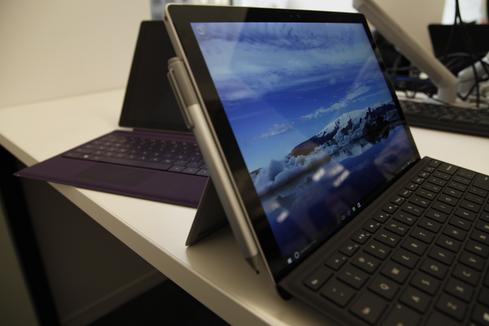Microsoft Pulls Its November Windows 10 UpdateMicrosoft Pulls Its November Windows 10 Update
About nine days after releasing its first major November update for Windows 10, Microsoft is yanking the downloadable version and replacing it with the build released originally in July.


Surface Pro 4 vs. Surface Pro 3: Should You Upgrade?
Surface Pro 4 vs. Surface Pro 3: Should You Upgrade? (Click image for larger view and slideshow.)
Microsoft issued its first major update to Windows 10 (1511) November 12, but then, without giving a clear explanation, stopped allowing users to download the latest version of the OS using the Media Creation Tool (MCT).
The .iso files are still available, but a ZDNet report confirms that when downloaded using MCT, they install upgrades to the original Windows 10 (build 10240) release from July, not the latest 1511 release as they did earlier.
In the availability announcement, Microsoft said that for those already running Windows 10, "you will receive the November update according to your Windows Update settings. If you're running Windows 7 or Windows 8.1, you can take advantage of the free upgrade offer and receive the November update as part of your Windows 10 upgrade."
For most users, the Windows Update settings have been a problem. It depends on Microsoft to offer the software to the user for download, and the company has done so on a staggered and lagging schedule.
Users who had been impatient for the upgrade had turned to downloading the disk image from the Microsoft site and creating their own installers with the MCT. That approach had even been recommended by a Microsoft staffer via Twitter.
The sudden change without explanation caused some great consternation on the Microsoft support forum.
Tero Altorten noted November 21 on Twitter that the Microsoft FAQ page on the update used to contain a link for downloading the .iso disk image, but that the link has been removed.
A Microsoft spokesperson told ZDNet, "The November update was originally available via the MCT tool, but we've decided that future installs should be through Windows Update. People can still download Windows 10 using the MCT tool if they wish. The November update will be delivered via Windows Update."
As mentioned earlier, the Windows 10 that the statement is referring to is the original release of the OS, not the new release.
However, a Microsoft spokesperson told information, "Recently we learned of an issue that could have impacted an extremely small number of people who had already installed Windows 10 and applied the November update. Once these customers installed the November update, a few of their settings preferences may have inadvertently not been retained. For these customers, we will restore their settings over the coming days and we apologize for the inconvenience. We worked to resolve the issue as quickly as possible - it will not impact future installs of the November update, which is available today."
Nonetheless, there is other fallout from this action. For example, the multi-edition installer that was available (x86 and x64) is no longer there.
Not only that, Windows 7 or 8.1 users wanting to upgrade to Windows 10 must now go through a two-step process. They first need to download and upgrade to the July 29 version of Windows 10, and then download and upgrade to the just released version.
[Read about the latest updates for Windows 10.]
However, one of the most problematic situations is that, whereas the MCT could create a bootable image on a USB drive or a DVD that could be used on multiple machines needing an upgrade, now each of those machines must go through a separate download and upgrade process. This is a major complication for the administrator of a large number of machines.
But this may be exactly why the MCT option was pulled. By discovering a direct link to every machine that is being upgraded, Microsoft knows all the machines that are using its software. It may be seen as some sort of anti-piracy action in some people's eyes. But it will end up a major bottleneck for most users.
This report was updated on Nov. 24, 2015 at 6 p.m. ET to include a statement from Microsoft.
**New deadline of Dec. 18, 2015** Be a part of the prestigious information Elite 100! Time is running out to submit your company's application by Dec. 18, 2015. Go to our 2016 registration page: information's Elite 100 list for 2016.
About the Author
You May Also Like






